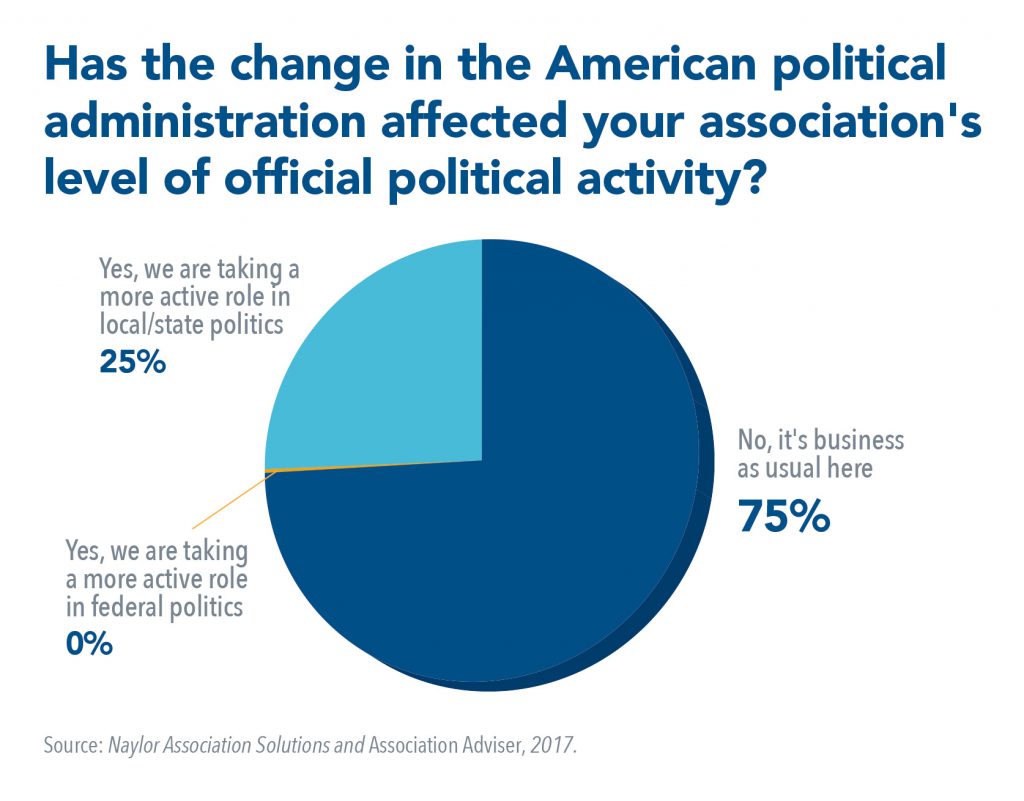Did You Know? It’s Business As Usual For Associations’ Advocacy Activity
The past 11 months have been a heck of a ride for American political junkies, and some might argue for the general public as well. But associations, whose missions often ring with echoes of bringing stability and long-term improvements to an industry, seem to be quietly observing and humming along as usual.

A full three-quarters of respondents to last month’s Did You Know? Poll say that it’s “business as usual” with regards to official political activity despite the change in administration at the federal level. This is likely because changing or improving national policy is almost always more of a marathon than a sprint. Associations already involved in advocacy efforts know that a long-term strategy of sustained, targeted activity is best for enacting change. As Mark McCallum, speaking in this month’s Corner Office profile said, “Sometimes, it can take three to four years between legislation enactment and final regulations [regarding industry-related policy] to be in place.” Advocacy is a long game that spans years, if not decades, and multiple administrations.
Furthermore, the types of relationships needed to successfully influence positive change for an industry take time to build. “Our members … establish relationships with elected leaders that grow over time and can serve our industry well,” McCallum noted. Such relationships are best built in person, he noted, and those in-person meetings often take much advance planning that associations involved in legislative affairs are already doing.
Just 25 percent say they have started taking a more active role in local or state politics – a reminder to us that while federal political activity often makes for splashy headlines and animated water cooler talk because of the big personalities involved and the widespread impact federal legislation has, many policies, regulations and professional standards that affect daily life are set at the state or community level.
For example, education policy is set at the state level, so associations such as the National Association for Music Education keep a robust forum on their website about education policy at the federal, state, AND local levels to help members stay informed about political activity impacting music education in public schools. Members know that funding for music education is set at the state level, and the accessibility of music education is often set at the district level, so association staff helps members find local legislators to speak with and present the case for music to remain a part of school curricula. Some state-level education associations, such as the Nebraska State Education Association, serve as teachers’ unions and provide tools and training for education professionals to protect and advance their professional interests in front of their state legislature.
No poll respondents say their level of political activity at the federal level has increased in the past year – likely a function of the fact that advocacy at the federal level requires much advance planning.
What about your association – have you started to engage in advocacy more or less since last year? Let us know in the comments below.

